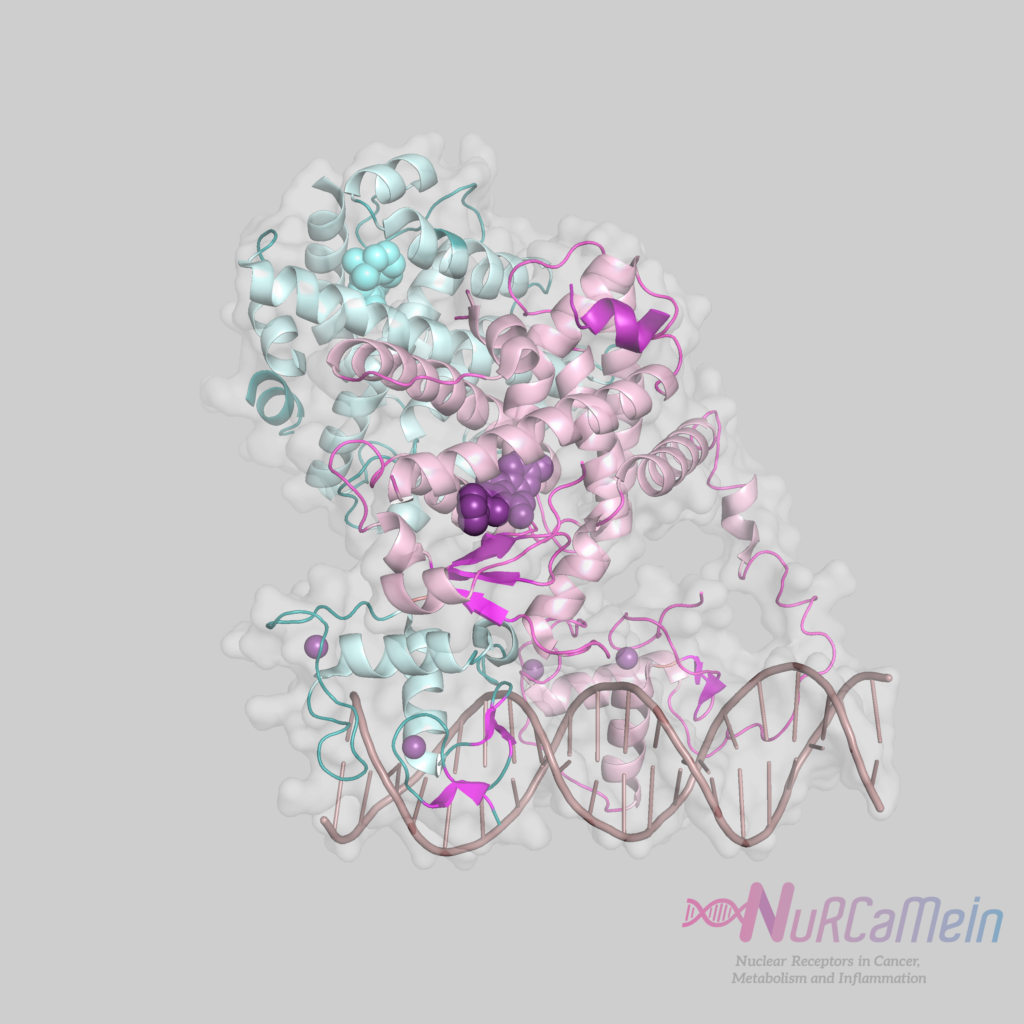PPAR (PEROXISOMAL PROLIFERATOR-ACTIVATED RECEPTOR)
Ligands
The main ligands of PPARs are substrates derived from lipids or saturated, monounsaturated or polyunsaturated fatty acids and their metabolites. In addition to natural ligands, synthetic ligands have also been developed with specificity for each isotype, including thiazolidinediones, PPARγ ligands, due to their insulin sensitizing action.
Classification
PPARs are members of the NR1 subfamily, of the large nuclear receptor superfamily (NRs), along with the TRs, VDRs, or LXRs receptors.
In turn, based on their affinity for the ligand and its mode of action, they are classified as “adopted” and Type II receptors.
Structure and interactions
PPARs possess the canonical structure of nuclear receptors common with other family members, including:
- NTD domain: coactivators binding region with DNA transactivation function, in N-terminal position.
- DBD domain: Highly conserved DNA binding region, containing two “zinc fingers” that interact with specific response elements, such as RXRs to form heterodimers.
- LBD domain: Located at the C-terminus, it is composed of 13 α-helices and four strands of ß-sheets, and is the ligand-binding region.

PPAR structure
Expression
PPARs are predominantly expressed in tissues that require a lot of energy, such as skeletal muscle, heart, liver, and brown adipose tissue.
Significant expressions of PPAR-α also occur in the proximal tubules of kidneys, the intestinal mucosa, the adrenal gland, and in many cell types present in vessels, including endothelial cells, smooth muscle cells, and in monocytes and macrophages.
Main functions
The functions of PPARs are key in modulating genes that regulate energy balance, in glucose homeostasis, in the metabolism of triglycerides and lipoproteins, and in the synthesis of fatty acids.
They also play a role in oxidation, storage, export, cell proliferation, inflammation, and vascular tissue functions, as well as in the inflammatory response.
PPARs are divided into three isotypes: PPARα, PPARγ and PPARβ/δ, which have different functions. On the one hand, PPAR-α activation reduces triglyceride levels and is involved in the regulation of energy homeostasis. On the other hand, PPARγ activation leads to insulin sensitization and increases glucose metabolism. Finally, PPARβ/δ activation favors an increase in fatty acid metabolism.
PPARα and PPARγ are also expressed in macrophages and play an important role in the inflammatory responses.
In conclusion, the PPAR family of nuclear receptors plays a major regulatory role in metabolic functions and the immune system.
PPARs in the NuRCaMeIn Network
- Laboratorio de la Dra. Carme Caelles | Grupo de Señalización Celular Facultad de Farmacia, Departamento de Bioquímica y Fisiología. Universidad de Barcelona
- Nuclear Receptors, Inflammation, Diabetes and Atherosclerosis | Nurcamein
References
- The peroxisome proliferator-activated receptor: A family of nuclear receptors role in various diseases, Sandeep Tyagi et al. | Journal of Advanced Pharmaceutical Technology & Research (JAPTR)
- PPARs: regulators of metabolism and as therapeutic targets in cardiovascular disease. Part I: PPAR-α, Lu Han et al. | Future Cardiology
- PPARs: regulators of metabolism and as therapeutic targets in cardiovascular disease. Part II: PPAR-β/δ and PPAR-γ, Lu Han et al. | Future Medicine
- Receptores activados por proliferadores peroxisómicos (PPAR), metabolismo energético y aterosclerosis, et al. | Endocrinología y Nutrición (SEEN y SED)
